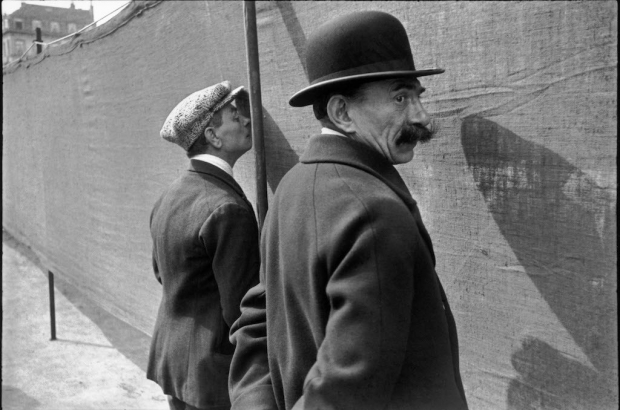- Daily & Weekly newsletters
- Buy & download The Bulletin
- Comment on our articles
The Eye and Heart of Cartier-Bresson
Here you have Henri Matisse, in his Vence studio, wearing a cap and dressing gown, and holding a dove in his hand. There a wall with a gaping hole, undoubtedly damaged by shelling: several children are playing around it, in the rubble; one is jumping over a section of the wall. Further on, the elegant downward curve of a stone staircase, accentuated by the handrail, towards a street, also curved… a bicycle rides by. And now a bride and groom: she is standing on a swing, laughing with her head tilted backwards; he is looking at her. This other shows the crowd attending Gandhi’s cremation, in India; some onlookers have climbed onto nearby trees. There is also the couple dressed in black, lying on a pebble beach, and protected from the sun by a large umbrella, also black. A man runs over a puddle; even though we only see his legs, his whole body is reflected in the water. Four Muslim women in chadors, their backs turned to the photographer, look out onto a valley in Srinagar, Kashmir…
Each of Henri Cartier-Bresson’s photographs is wonderfully balanced and precise. A delightful experience. But why is it that these 133 photographs, currently exhibited at the Brussels Jewish Museum, are always so moving, even though almost all of them are part of our collective image library? Why are they so poignant? Why are we constantly drawn to them? Which of our feelings do they arouse with 100% accuracy?
Read the rest of the Mu in the City article here



















